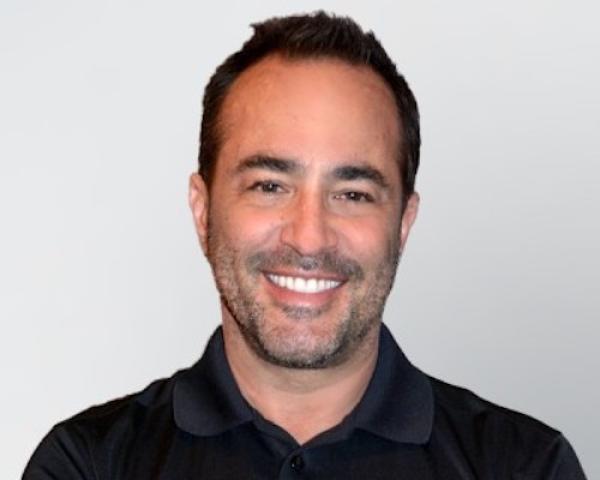Insurance Thought Leadership
You’ve been pushing hard to help the insurance industry innovate ever since you founded WeGoLook 15 years ago. How are we doing?
Robin Roberson
With the advent of insurtech, we've seen significant advancement in collaboration and multiple types of technology. Many carriers and brokers have become more welcoming of digital transformation, though this shift took time. We witnessed a surge of insurtech companies developing various technologies for risk assessment, underwriting, and claims modeling. Today, thousands of companies worldwide can interface with any point of the insurance ecosystem, whether it's carriers, brokers, TPAs, IAs, or third-party providers.
Despite these advances, we still observe considerable manual work in the claims process itself. While data capture tools have improved significantly - going from mailed photos to mobile phone submissions, and resolving connectivity issues - the actual claims workflow from FNOL to close remains largely manual. Desk adjusters and claim handlers continue to face challenges, including toggling between multiple systems, managing various file types, handling both unstructured and structured data, and dealing with spreadsheets and photos. We've even seen people still taking notes on scratch paper and searching through large binders to determine proper procedures for specific carriers and situations.
This represents an area of opportunity, which is one reason why we started Agentech. Overall, the industry's willingness to adopt and leverage technology has improved significantly compared with just a few years ago. Everyone's more comfortable with it now, though it's worth noting that insurance has traditionally been a legacy-oriented, archaic, and risk-averse industry.
Insurance Thought Leadership
To provide a bit of background on how you think about innovation, tell us about WeGoLook and its eventual acquisition by Crawford.
Robin Roberson
WeGoLook was an incredible journey that leveraged the gig economy before it became widely known through companies like Uber. We created a platform that dispatched contractors on demand to capture data through photos and videos and to perform simple tasks. One of our major successes came through partnering with one of the nation's largest insurers, helping them shift from their legacy model to a new auto model.
We pioneered desk adjusting within their organization, transforming what traditionally required licensed adjusters several days into a much more efficient process. For example, tasks like photographing parking lots, cart barns or construction work or documenting ingress and egress points could be completed quickly using our geolocation technology. We reduced what was typically a three- to seven-day process down to just 45 minutes for the carrier, while also handling police reports and other documentation needs.
We also made significant inroads in the auto industry, including working with Tesla before they developed their own app for trade-in models. WeGoLook was ultimately sold to Crawford in early 2017, and I stayed on for about two and a half years before moving on to ClaimCentral.
My business partner Kenneth and I collaborated with ClaimCentral, an Australian company, where I served as managing director for North America. Our focus shifted from working with independent contractors to becoming providers of claims services. We recognized that adjusters and TPAs were struggling with the inefficiency of logging into multiple platforms to manage various services - from EMS to roofing, roof tarping, and drywall work. In response, we built a comprehensive ecosystem to streamline these processes. This solution proved so successful that we eventually sold a portion of the platform and exclusively licensed the remainder to Eberl Claim Services. As part of contract negotiations, I moved to Eberl as SVP of platform partnerships for two years.
Throughout this journey, I've remained deeply committed to driving efficiency in the insurance space. And naturally, it's been impossible to ignore the transformative potential of AI in this field.
Insurance Thought Leadership
You also started a consulting business after leaving Crawford, to help others innovate. You’ve been busy.
Robin Roberson
After leaving Crawford, we started a company called Goose and Gander. It was a boutique insurtech consulting firm that worked with multiple clients, many of whom we still have today. Our services covered a wide range of areas including cyber, data tokenization, cybersecurity, digital strategy, and even branding. We helped multiple clients with various aspects of their business. TokenX was one of our customers. We helped them secure a position with Marsh McLennan, and they eventually exited for approximately $140 million - quite an impressive outcome.
Insurance Thought Leadership
That brings us to Agentech. Where did that idea come from?
Robin Roberson
I grew up watching Star Trek and was the only girl in chess club. I’m a self-proclaimed nerd, and I've always loved artificial intelligence. When a colleague reached out about a problem that could be solved using agentic AI, that led to Agentech.
The idea began with ethnographic research in the pet insurance space, specifically looking at creating pet health profiles. They identified a significant bottleneck in the claims process where someone had to manually compile health histories and verify them against policies. As a pet lover myself, with dogs and koi fish, and coming from a foster rescue background, I understood how critical quick claim processing is when people need to make decisions about their pets' medical procedures.
What really caught my attention was realizing how similar this process was to property and casualty insurance claims. The parallels between pet insurance claims and residential property or auto claims were striking. In fact, we discovered these processes were remarkably similar across multiple lines of business.
The company was born out of Gitwit, a venture studio in Tulsa with a strong research team, business analysts and engineers. They've already launched two other AI-focused companies, so there was tremendous expertise behind the project. When Alex approached me about collaborating, it was an exciting opportunity to combine their technical expertise - including our founding engineer, who's an astrophysicist - with my passion for customer service and process improvement.
What makes this solution special is its flywheel effect. When adjusters have the best tools, claims are processed more quickly and accurately. This leads to happier policyholders and reduced costs for carriers, allowing for continued improvement.
Insurance Thought Leadership
How has your business progressed since completing your recent capital raise?
Robin Roberson
We're already generating revenue with paying customers, and we've been operating for just over a year now. We emerged from stealth mode in September and immediately pursued aggressive growth, successfully raising a $3 million seed round in just 30 days. The investment round was supported by Oklahoma-based investors, with just two exceptions that we had previously engaged. One is a major IA firm, and the other is Thomas Brown from Clickclaims, who owns a claims management platform and serves as one of our technology advisers.
What's particularly exciting is seeing how our AI agents can be applied to field adjusting, not just desk adjusting. We're also seeing great potential with third-party service providers I've worked with over the years, as they all interact with the claims workflow in different ways. This technology allows us to orchestrate and manage these processes more efficiently, streamlining the entire workflow.
Insurance Thought Leadership
What is your vision for the company's future, particularly regarding services for agents and brokers?
Robin Roberson
Our primary focus is helping to process claims much more quickly and triaging them properly. For brokers and agencies, this means enabling immediate information sharing when incidents occur, even in the middle of the night, and facilitating smooth communication among policyholders, TPAs, and carriers. We want to eliminate the need for policyholders to repeat incident details multiple times to different parties.
It's important to understand that agentic AI within the claims process provides digital agents that function like highly efficient administrative assistants. We're not making decisions or adjudicating claims - we're simply a support tool automating many time-consuming manual tasks. For brokers dealing with multiple carriers, guidelines, and jurisdictional rules, our orchestration agents are particularly valuable.
We currently have a catalog of over 200 agents that we leverage, and we're continuously expanding this number. These agents communicate with each other to rapidly identify and process all necessary components for effective claims triage. Looking ahead, we're focused on improving adjusters' quality of life. I recently spoke with an adjuster who takes her laptop to her children's ball games during hurricane season. The surge of claims doesn't stop just because the storm passed - it continues for weeks. With our technology, we believe this kind of around-the-clock work shouldn't be necessary except in rare circumstances.
Our technology also addresses the industry's talent shortage. Younger professionals expect better technology and don't want to spend their days doing repetitive work. By providing excellent tools that automate routine tasks, we allow adjusters and claims handlers to focus on complex decisions and claim adjudication.
We're already seeing success through our integration with Snapsheet, where our APIs are automating tasks with minimal change management needed. For example, we can automatically generate and schedule status update letters based on state guidelines, simply notifying the claims handler when it's done. This eliminates the need for handlers to manually complete numerous status letters each morning - a simple but significant improvement in efficiency.
Insurance Thought Leadership
Any final thoughts?
Robin Roberson
I would highly recommend to your readers that if they haven't already identified at least 100 or 200 ways that AI can help support and improve their business, they're already behind. It's important to understand that the companies that best leverage technology will be the clear winners moving forward.
Obviously, I'm passionate about this whole topic, and I'm always happy to talk to anybody if they have questions about anything – it doesn't even have to be about AI agents. I'm here to help if I can.
Insurance Thought Leadership
Thanks, Robin. It’s been great getting to catch up a bit.
About Robin Roberson
 | As a serial entrepreneur, Robin has more than 25 years of experience working with clients to develop solutions to improve their business. She has held numerous leadership roles throughout her career and has won multiple awards highlighting her commitment to customers, business organizations and her community. Cyber security, artificial intelligence, and digital strategies are primary passions for Robin, and she is eager to share agentic AI solutions, which deploy AI agents to automate the most tedious tasks within the claims process, as co-founder and president of Agentech.com. Previously, Robin was co-founder and CEO of WeGoLook, where she changed the way insurance carriers (along with other industries) leveraged the gig economy, by dispatching on-demand “Lookers” to capture field data, then selling her company to a global TPA for over $36 million. Recently, she held a dual role for the North American expansion of an Australian repair vendor platform and was president of Livegenic, continuing to service multiple P&C carriers. After successfully positioning the platform with leading IA firm Eberl, she helped launch the FLEX Repair program as SVP of Eberl platform partnerships. Robin is also an investor in Array, a low-code/no-code platform that enables customers to digitize all manual forms while easily creating custom workflow processes for maximum efficiency, and is an advisor to Aptly, a SaaS platform designed to ensure authority is properly delegated across an enterprise to reduce risk, improve governance, and facilitate rapid, informed decision-making to enhance operational agility and competitiveness. Robin is a board director at BancFirst, board member for United Way of Central Oklahoma, and member of Leadership Oklahoma, Committee of 100. She was the first female director at OESC for the state, responsible for 450-plus employees and 27 offices. She regularly attends and speaks at industry events. However, her favorite role is ‘mom’ to two amazing adult sons and three dogs. As a breast cancer survivor, Robin is grateful for the opportunity to continue thriving personally and professionally. |






















